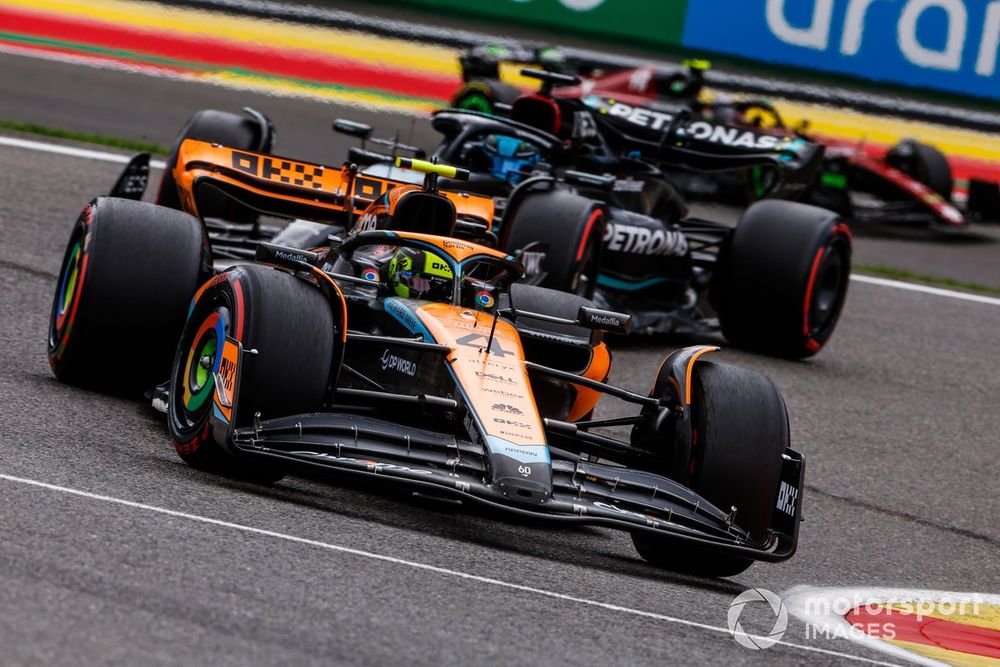
McLaren started the season off the pace with a car that was both lacking overall downforce and suffering from a lack of aerodynamic efficiency, meaning it creates too much drag for a given downforce level.
Incoming team principal Andrea Stella rolled out a recovery plan to get the team's MCL60 back on track, which included a philosophy change and then a comprehensive upgrade package overseen by a revised technical structure at Woking.
The fruits of its labour were rolled out over the month of July, seeing McLaren make a huge jump in performance as it snared two podiums with Lando Norris in Silverstone and Budapest, followed by a second-place finish for rookie Oscar Piastri in a wet Belgian Grand Prix's Saturday sprint.
But Spa's dry grand prix provided more evidence that for all its progress, McLaren's straight-line deficit is still sticking out like a sore thumb, with its cars lacking up to 15 km/h on the straights and Norris "getting overtaken before the DRS zone even started".
After the race, team boss Stella said McLaren would seek an "urgent" solution ahead of September's Italian Grand Prix at Monza, where its current spec would be punished even more.
When asked to explain the reasons behind its Spa straight-line deficit, Stella said McLaren's need to make wholesale car changes for its B-spec meant that it simply hadn't yet been able to free up the resources to address its drag issue for circuits like Spa.
It therefore decided to go for a higher wing level than was optimal for the high-speed circuit because at lower wing levels the car's excessive drag penalty would cost it more overall laptime in the corners than it was worth on the straights.

"We have done quite a lot of work on re-designing of the car from the start of the season," Stella explained. "One thing that we haven't attacked yet is actually the car at low drag level, so there wasn't much efficiency to gain by going on a small rear wing and we decided to stay at the point in which the car is at the moment most efficient.
"There's not only a tactical choice based on wanting to be quick in the corners or accepting to be slow on the straights. It's more like what the car actually has to offer as a function of the rear wing level. And at the moment, this is where the car performs the best.
"This is certainly something we plan to address for the future because then it creates a situation where the car is not necessarily very easy to race, especially as the conditions get dry and Eau Rouge flat and then you are exposed to other cars coming past."
Stella said McLaren's main avenue to address its weakness around the summer shutdown is to roll out a new low-drag rear wing, which will not only stand it in good stead at Monza but potentially also at Las Vegas, a street circuit which doesn't have high downforce requirements.
"The main opportunity for us is to keep working on the rear wing, but the overall impact on drag comes actually from the entire car," he added. "I think, for instance, Red Bull have done a very good job of having a car that is low drag independently of the rear wing.
"For Monza, we are working on some mitigations that we couldn't deliver in time for here, so we expect to be in better shape for Monza. And then, if there's further trimming to be done for Vegas, we have a little bit more time.
"This is something that was on our to-do list, but we are not there yet."







